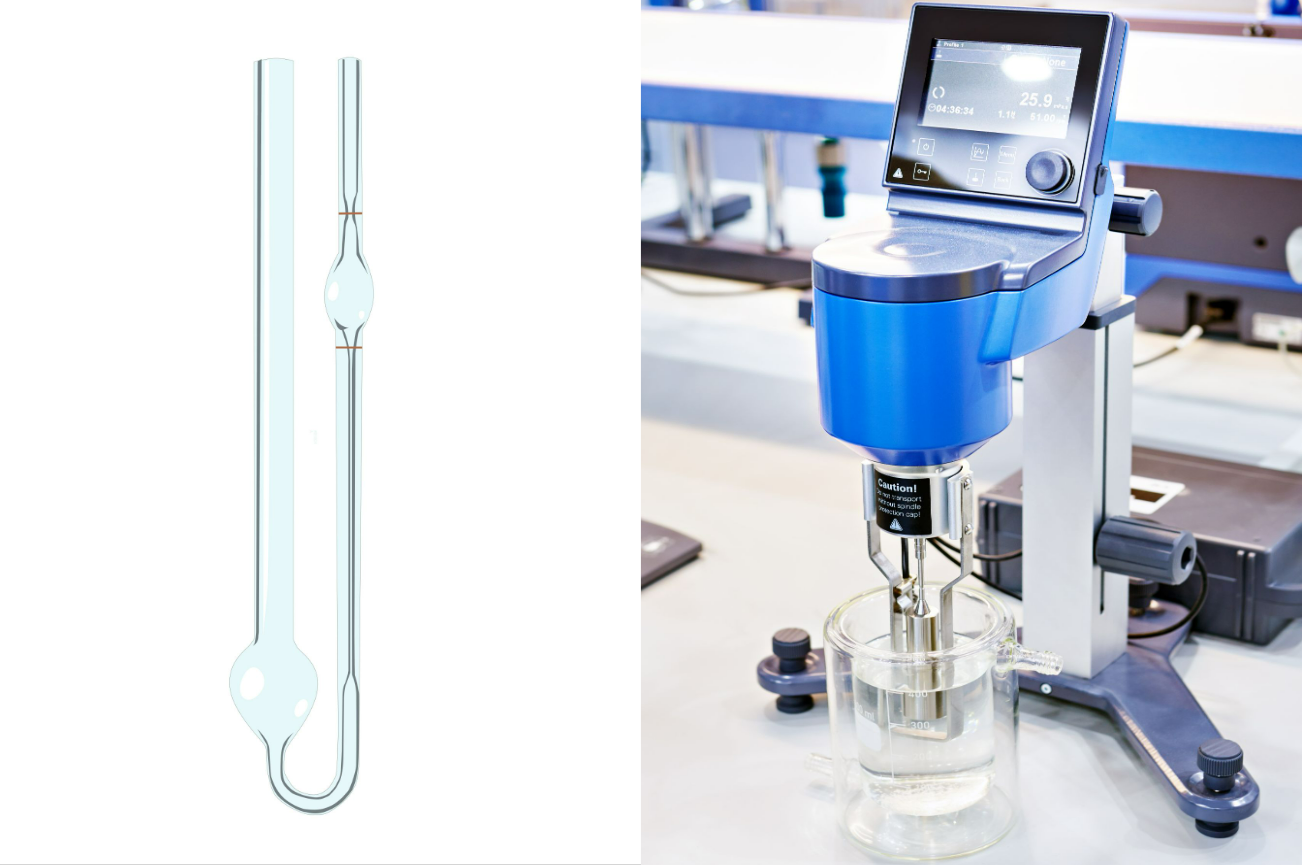What is viscosity? It also introduces the units used in viscometers.

1. Basic knowledge of viscosity
Viscosity is a numerical value that indicates stickiness or smoothness. For example, curry that is not boiled too much is watery, and curry that is boiled well is thick. The difference between "watery" and "thick" is due to different levels of viscosity.
Of course, viscosity varies greatly depending on the material. The illustration below shows that different materials have different viscosities. The more the material is on the left side, the lower the viscosity, and the more the material is on the right side, the higher the viscosity.

In addition, viscosity varies with temperature. See the article below for details.
| Related article: Viscosity changes when temperature changes|Rion Co., Ltd. |
As shown in a diagram, it takes some force to put starch syrup between two boards and pull the boards to move them. This is because starch syrup is viscous. Thick starch syrup requires more force than thin starch syrup. It is said that thick starch syrup is stickier or more viscous than thin starch syrup.

The viscous property, or viscosity, is that when there are relative velocities in the parts that are in contact with each other inside the fluid, resistance acts on the movement, and the faster one accelerates the slower one that is in contact with it, and the slower one is faster. It is the property of trying to slow down the other side.
2. Viscosity unit [cps/Pa·s]
Viscosity has several units, and can be broadly divided into "ps (Poise)" and "Pa·s (Pascal)".
ps is in CGS units and Pa·s is in SI units. To make it easier to understand the magnitude of viscosity, it is often expressed as cps or dPa·s.
See the table below for the relationship between each unit.
| ps | cps | mPa·s | dPa·s |
| 1 | 100 | 100 | 1 |
| 10 | 1,000 | 1,000 | 10 |
| 100 | 10,000 | 10,000 | 100 |
| 1,000 | 100,000 | 100,000 | 1,000 |
3. [Exception] About kinematic viscosity
The value V (= η/ρ) obtained by dividing the viscosity η by the density ρ of the liquid is called kinematic viscosity. There are two units of kinematic viscosity.
| Square meter per second | m²/s |
| Stokes | St |
Quantities measured with capillary viscometers (e.g. Ostwald viscometers) and short-tube viscometers (e.g. Ford cups) are known as kinematic viscosities.
To obtain the viscosity (Pascal second) from the kinematic viscosity, separately measure the density and calculate the product with the kinematic viscosity.
| η = ρV |
One hundredth of a square centimeter per second is called a square millimeter per second (mm2/s).
| 100 mm²/s = 1 cm²/s |
RION's viscometer is recommended for measuring viscosity!

RION's viscometer is recommended for the following three reasons.
1.Confidence in accuracy
RION has a long history of manufacturing and developing viscometers. Utilizing our many years of knowledge and experience, we are able to achieve accurate viscosity measurements that are competitive with our competitors.
2.Portable type that can be measured anywhere
Most common viscometers are large and heavy. However, RION's VT-06 is compact and lightweight while maintaining measurement accuracy. The structure is simple, so even people with no knowledge or experience of viscosity measurement can easily measure it.
3.Loved by many customers around the world
RION is a Japanese manufacturer, but the viscometer VT-06 is used not only by customers in Japan but also by customers in countries around the world. VT-06 may be used for quality control in the things you usually use and eat.



